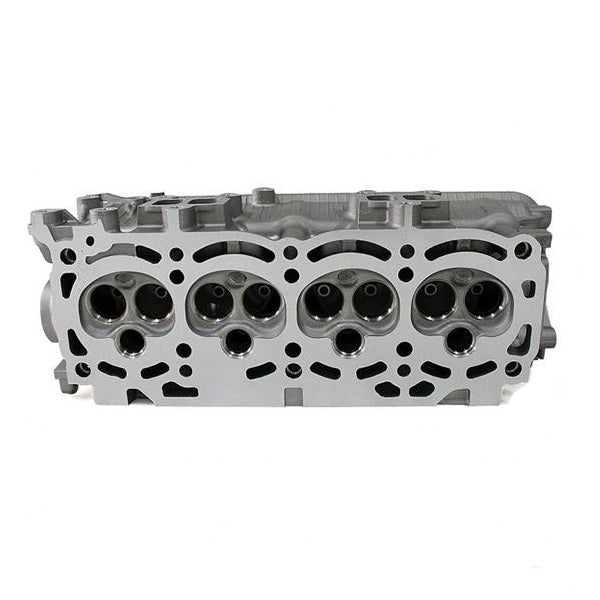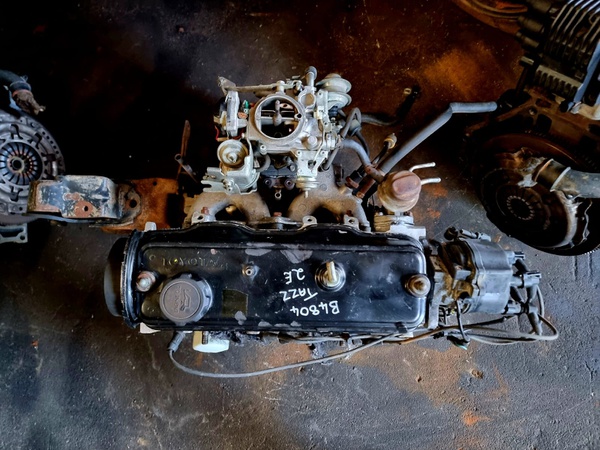Toyota Tazz: An Affordable Car That Doesn’t Compromise on Quality
Toyota Tazz: An Affordable Car That Doesn’t Compromise on Quality
Blog Article
Check Out the Newest Patterns in Engine Modern Technology Via Tazz
In the quickly progressing landscape of automobile innovation, Tazz stands at the leading edge, highlighting substantial improvements in engine systems that focus on both technology and sustainability. From hybrid engines that enhance gas efficiency to the introduction of hydrogen gas cells, the patterns shaping modern-day powertrains are not just improving performance yet likewise dealing with crucial ecological obstacles.
Crossbreed Engine Innovations
Crossbreed engine developments represent a pivotal change in vehicle modern technology, integrating the advantages of inner combustion engines with electric propulsion systems. This integration not only enhances gas efficiency but likewise lowers exhausts, meeting increasingly rigorous environmental guidelines. By utilizing both energy resources, hybrid engines can optimize efficiency, delivering power when required while saving gas throughout much less demanding driving problems.
Current developments in crossbreed technology consist of renovations in battery performance and regenerative stopping systems. These advancements permit higher power recovery throughout deceleration, which can be redirected to assist in acceleration or power accessory systems. Furthermore, manufacturers are concentrating on light-weight products and small styles to take full advantage of the efficiency of crossbreed powertrains.
The growth of plug-in crossbreeds has also increased the marketplace, making it possible for chauffeurs to charge their lorries utilizing standard electrical outlets. This feature often permits significant all-electric range, more reducing dependence on traditional gas. tazz. As the automotive market remains to advance, hybrid engine modern technologies are anticipated to play a vital role in bridging the gap in between conventional vehicles and fully electrical versions, supplying a transitional option that provides to diverse consumer requirements and choices
Developments in Electric Powertrains
The vehicle landscape is rapidly progressing, with electric powertrains becoming a leading pressure in sustainable transport. Advances in electrical automobile (EV) technology are dramatically improving user, performance, and performance experience. Trick technologies consist of enhancements in battery chemistry, which have boosted power thickness, minimized charging times, and expanded general battery life.
Solid-state batteries, as an example, assure to transform the market by supplying better safety and security and efficiency compared to traditional lithium-ion cells. Furthermore, advancements in regenerative stopping systems are allowing automobiles to recuperate power throughout deceleration, adding to general efficiency.
In enhancement to battery innovation, electrical motor designs are becoming more advanced. Developments such as incorporated electric motors and advanced thermal administration systems are aiding to maximize power delivery and decrease weight, ultimately boosting automobile characteristics.

Collectively, these breakthroughs highlight the dedication to change towards cleaner, extra efficient transportation remedies, placing electrical powertrains at the leading edge of automotive advancement.
The Rise of Hydrogen Fuel Cells
Increasingly, hydrogen gas cells are getting traction as a sensible alternative to standard interior burning engines and battery electric cars. This modern technology uses the chemical energy kept in hydrogen, transforming it right into electrical power with an electrochemical response with oxygen. The primary result of this procedure is water, making hydrogen fuel cells an eco-friendly option with absolutely no exhausts at the tailpipe.

Automakers are progressively buying hydrogen gas cell modern technology, acknowledging its capacity for long-range applications and quick refueling capacities that equal traditional gas. Additionally, markets such as heavy-duty transportation and public transportation are particularly appropriate for hydrogen gas cells, where battery electrical remedies may drop short because of weight and array limitations.
As research and investment continue to increase, hydrogen gas cells are poised to play a considerable role in the future landscape of tidy transport and energy remedies.
Enhancements in Internal Burning Engines
Technologies in interior combustion engine (ICE) modern technology are changing typical lorries check my source to satisfy modern-day environmental criteria and performance assumptions. Straight fuel injection, for circumstances, permits for better atomization of fuel, leading to more total burning and enhanced power output.
Additionally, turbocharging has acquired prestige, allowing smaller sized engines to provide higher efficiency without the weight of bigger engines - tazz. This modern technology not only improves efficiency yet likewise contributes to lower gas usage. Variable valve timing systems are likewise being improved, allowing engines to adjust to numerous driving problems for improved torque and responsiveness
Furthermore, making use of lightweight materials in engine construction is coming to be typical, further boosting gas efficiency by decreasing general lorry weight. Engine control units (ECUs) are progressively advanced, making it possible for real-time adjustments that maximize performance and emissions.
These improvements jointly represent a crucial shift in ICE modern technology, lining up with global sustainability objectives while still providing the efficiency chauffeurs expect from their cars. As the industry advances, these improvements proceed to shape the future of traditional automobile engineering.
Future Patterns in Engine Effectiveness
Considerable advancements in engine performance are prepared for as makers concentrate on incorporating sophisticated technologies to satisfy strict environmental guidelines and customer demands. The change towards electrification, crossbreed systems, and alternative fuels is reshaping the automotive landscape, driving developments that enhance gas economic climate and minimize exhausts.
Among the crucial trends is the application of sophisticated materials and manufacturing strategies. Light-weight composites and high-strength alloys contribute to decreased lorry weight, therefore improving total performance. Furthermore, the fostering of turbocharging and variable shutoff timing innovations permits for improved power result from smaller sized engines, additionally enhancing fuel economy.

Final Thought
Innovations in crossbreed engine systems, electric powertrains, and hydrogen gas cells demonstrate a dedication to decreasing discharges while boosting performance. Improvements in internal combustion engines and an emphasis on you could try this out lightweight materials contribute to general engine efficiency.
From hybrid engines that maximize fuel performance to the emergence of hydrogen gas cells, the fads forming modern-day powertrains are not just boosting efficiency however likewise attending to critical ecological obstacles.Crossbreed engine advancements represent a pivotal change in automotive technology, integrating the benefits of internal combustion engines with electrical propulsion systems.Additionally, turbocharging has obtained prominence, permitting smaller engines to deliver higher efficiency without the weight of larger engines. Additionally, the fostering of turbocharging and variable valve timing innovations permits for improved power result from smaller sized engines, further improving gas economy.
Enhancements in internal burning engines and an emphasis on lightweight materials add to total engine efficiency.
Report this page